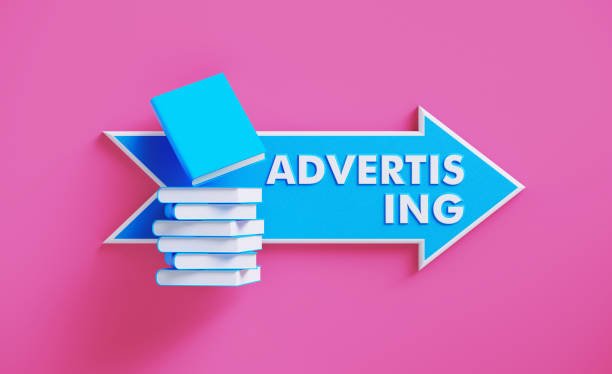Logical fallacies are deceptive arguments that appear valid but lack real logic. In advertising, these tactics are powerful tools used to influence consumer choices without presenting substantial evidence. Brands rely on these techniques because they can shape opinions and motivate quick decisions by appealing to emotions rather than reason. Identifying these fallacies is essential because they distort reality and push consumers toward purchases that may not truly satisfy their needs. Advertisers skillfully craft messages that sound convincing even when they have no logical foundation.
Why Do Advertisers Use Illogical Arguments?
The main purpose of advertising is persuasion, and emotions play a crucial role in buying behavior. Logical fallacies are particularly effective because they create shortcuts in the decision-making process. Instead of analyzing the details of a product, consumers often respond to emotional triggers. For instance, an advertisement might suggest that “the smartest buyers choose this product,” using flattery to influence decisions without proof of quality. Such techniques appeal to vanity, fear, or social acceptance, making consumers feel that purchasing the product aligns with their identity. By using fallacies, brands maximize their chances of engagement and conversions.
Different Types of Logical Fallacies Found in Ads
Fallacies appear in various forms across marketing campaigns. The bandwagon fallacy is one of the most common, where advertisers claim that a product is popular because “everyone loves it,” implying that popularity equals quality. Another frequent tactic is the appeal to authority, where celebrities endorse a product even though they lack expertise related to it. False cause fallacies also dominate the beauty and fitness industries, where products are advertised as the sole reason for dramatic results. Emotional appeals, such as fear-based messages or guilt-driven narratives, are other examples of flawed reasoning disguised as persuasive marketing.
Real Advertising Examples of Logical Fallacies
Modern campaigns are filled with examples of logical fallacies in advertising. A luxury perfume brand might claim, “True elegance starts with our fragrance,” which is an appeal to emotion, linking self-worth to a product. Fast-food advertisements that declare, “Everyone’s favorite burger is here,” use the bandwagon effect to suggest that popularity determines taste. Tech brands often state, “Upgrade now or fall behind,” leveraging fear of missing out rather than presenting factual benefits. These statements sound persuasive but lack evidence, highlighting how fallacies dominate the advertising world.
How These Fallacies Impact Consumer Psychology
Logical fallacies are effective because they target subconscious desires and fears. People naturally seek approval, security, and success, and ads exploit these tendencies to influence behavior. When an ad associates a product with intelligence, beauty, or social status, consumers feel motivated to buy, often without questioning the claim. This psychological manipulation explains why fallacious advertising techniques remain popular even in a data-driven market. Advertisers know that emotional engagement leads to stronger brand loyalty than factual reasoning, which is why fallacies continue to thrive.
Ethical Considerations in Fallacy-Based Advertising
The use of logical fallacies raises important ethical concerns. While these tactics are legally permissible, they blur the line between persuasion and deception. Consumers may be misled into expecting unrealistic results, leading to dissatisfaction and mistrust. Regulatory authorities attempt to limit misleading ads, but enforcing these standards can be difficult when fallacies are subtle. Ethical marketing emphasizes honesty and transparency, encouraging brands to provide evidence-based claims rather than manipulating emotions. Understanding these concerns empowers consumers to demand fair and truthful advertising practices.
How Consumers Can Defend Against Misleading Ads
The most effective defense against fallacious advertising is awareness. Before accepting any claim, evaluate whether it is supported by facts or relies on emotional triggers. Look for independent reviews, product comparisons, and verified information before making a purchase. If an advertisement uses fear, popularity, or authority as its main argument, it likely contains a logical fallacy. Developing critical thinking skills allows consumers to navigate advertising messages confidently, avoiding unnecessary expenses and disappointment.
FAQs
What is the role of logical fallacies in advertising?
They are used to influence consumers by appealing to emotions rather than facts, making ads more persuasive and engaging.
Are these tactics effective in marketing?
Yes, because they create emotional connections that often outweigh rational decision-making, leading to higher sales.
Can using fallacies in ads be harmful?
Yes, they can mislead consumers into making poor purchasing decisions and create unrealistic expectations.
How can I recognize a fallacy in an ad?
Check if the message relies on fear, authority, popularity, or exaggerated promises without providing real evidence.
Conclusion
Logical fallacies have become a standard part of modern advertising strategies because they effectively influence consumer behavior through emotional appeal. These techniques often sound convincing while lacking logical substance, leading to impulsive buying and unrealistic expectations. By recognizing and questioning these tactics, consumers can make better decisions and avoid being misled by clever marketing. Understanding examples of logical fallacies in advertising gives you the power to separate genuine value from manipulative messaging, ensuring that your choices are based on reason rather than illusion.
Author Bio:
Written by Emily Carter, a digital marketing professional specializing in propellerads strategies and campaign optimization. Emily provides practical insights on ethical and effective advertising methods. Visit PropellerAds to discover advanced tools and solutions for boosting your ad performance.
Related Reads
- Custom Fitness App Development: Build the Fitness App Your Users Actually Want
- The Power of Glossy Anodized Aluminum in the Construction Industry Today
- What Is the Most Popular Smoker’s Lips Treatment Right Now?
- Can Under-Eye Filler Help Define Your Facial Profile?
- Step Up Your Wardrobe Game with a Corteiz T Shirt
- The Role of Hospital Management Software in Digital Healthcare Industry Growth



